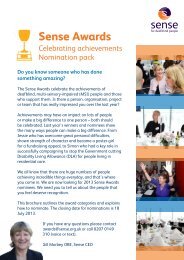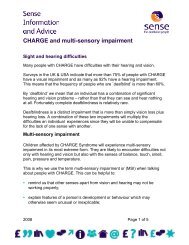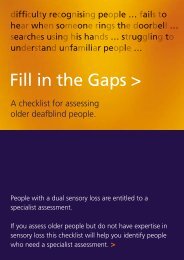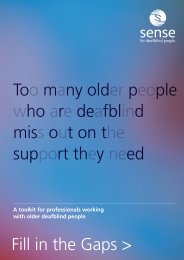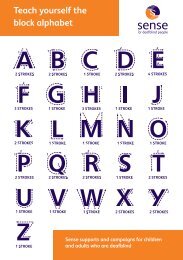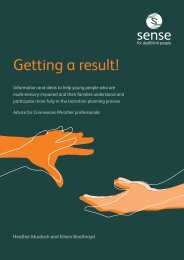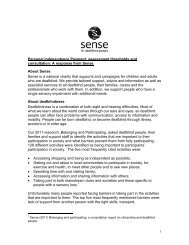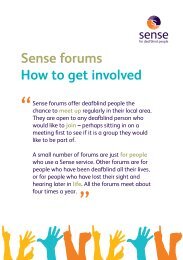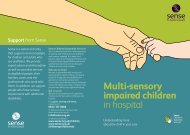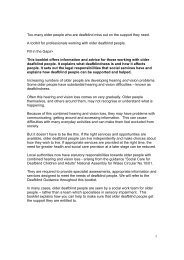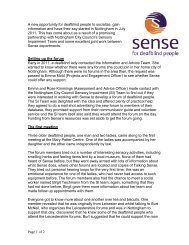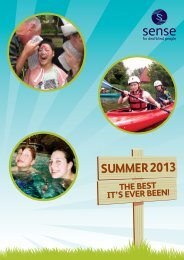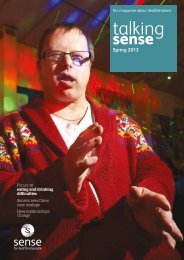MSI Unit Curriculum - Sense
MSI Unit Curriculum - Sense
MSI Unit Curriculum - Sense
Create successful ePaper yourself
Turn your PDF publications into a flip-book with our unique Google optimized e-Paper software.
<strong>MSI</strong> <strong>Unit</strong> <strong>Curriculum</strong>: Phase 2Group activities are introduced as part of familiar daily routines (for example,snack time sessions). Pupils are supported individually by trusted keyworkers.Pupils’ awareness of their peers is consistently encouraged – for example, bydrawing attention to peers’ characteristic sounds or actions.Pupils are placed where they can see/hear/sense peers when appropriate. It isrecognised that this is an activity in its own right for many pupils, and one whichsome find intrusive and/or stressful.Very familiar daily activities (such as greeting and collective worship) aredeveloped to include distinct identifiers for other pupils – for example, tactilecards, photos or musical styles for singing names.CommunicationPupils use intentional, non-symbolic communication (for example, wholebody gestures, facial expressions, actions on objects). They understandsymbols for some familiar activities and people and with support may usethese expressively in specific contexts.They rely heavily on routines and contextual cues in understanding theirenvironment, and need skilled familiar adults to interpret their expressivecommunication.Pupils are encouraged to make choices, choosing from two options presentedsimultaneously (for example, two drinks) so that they can try both options, morethan once if they wish, before making up their mind.Pupils’ communication is always responded to. When appropriate, staff reflectback to the pupil an extended version of what has been communicated,incorporating symbols (signs/words/photos/symbols) wherever possible.Pupils’ abilities and preferences are assessed, formally and/or informally, toidentify appropriate symbolic communication modes. A range of modes maybe used, with different emphases for receptive and expressive communication.The modes used may vary over time or (more commonly) become increasinglydistinct.Cues are used to differentiate and name activities. Pupils are given the cuebefore and (where appropriate) during the activity, and will usually be helped toput it away at the end. Objects, pictures, photos, symbols, songs, actions and/or scents may be used, depending on individual abilities and preferences. Mostpupils also have a cue for ‘one-off event’ to cover emergencies and activitiessuch as birthday celebrations.43



